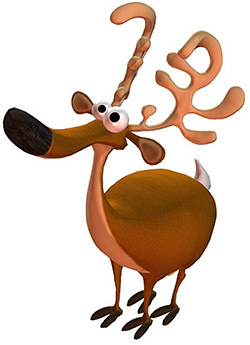Deer Repellent Plants
 Deer in the Hill Country are more like lawn ornaments or the neighborhood cat who comes around scrounging for food rather than the wild animal we used to hunt. It seems like just overnight a deer can clear all the flowers off that shrub in your front yard. The trick deer repellent is to find a plant that doesn’t appeal to them.
Deer in the Hill Country are more like lawn ornaments or the neighborhood cat who comes around scrounging for food rather than the wild animal we used to hunt. It seems like just overnight a deer can clear all the flowers off that shrub in your front yard. The trick deer repellent is to find a plant that doesn’t appeal to them.
Although there are no plants that actually repel deer, there are some that would be considered a last resort meal, but are still attractive to the eye, as well as to birds and butterflies. For the most part, deer will ignore plants with a strong fragrance and annoying textures.
Columbines are an excellent choice. They produce many intricately designed flowers in a variety of colors and are extremely easy to grow. This perennial flowers from spring through midsummer.
Foxgloves are another beautiful addition to any garden or flowerbed. The cluster of bells along the tip of the stem adds a touch of playful elegance to the front yard that is sure to survive a visit from even the most curious of deer. Hummingbirds, on the other hand, will go crazy over those tapered blooms. If you have dogs or cats, be certain to plant these out of reach. They contain cardiac glycoside toxins, which directly interfere with heart muscle function.
Lavender is another option and grows quite large, not to mention all the fresh lavender you need for tea and sachets. Lavender is relatively easy to grow; it does require some pruning, but harvesting the flowers for personal use takes care of that. It remains in bloom from early spring to late fall.
Along the same lines, Echinacea comes in a wide range of colors and with its very powerful scent, it is able to keep the deer at bay. Echinacea is a long used medicinal plant, its tea for soothing sore throats and replenishing the body with vitamins, thus adding to the value of having one within arms reach.
Butterfly weed, one of my favorites, produces large clusters of vibrant orange flowers. The best part? It’s drought resistant! It blooms late in the spring, but the flowers remain through the summer. As the name hints, this is one of the best butterfly attractants.
Possibly one of the most popular tropical garden plants is the Canna. Growing several feet tall with bright green foliage and red-orange blooms, it provides an extravagant focal point while still helping to keep your lawn deer-free.
To keep color in your yard later in the year add Lenten rose or the very similar Christmas rose. Both bloom in winter and early spring when the rest of your flower bed has likely gone into hibernation. The beautiful double-flower blooms can be from a deep maroon or teal all the way to a light ivory. Don’t be scared–they are not real roses! They actually belong to the Buttercup family, and have quite an interesting history.
Hakonechloa macra, also known as Japanese Forest Grass, is a small to medium sized bush. Simple to grow in areas of shade or sun, and remains green year round. It can be used in borders, beds, or containers. All in all, the more fragrant the flower the better deer repellent the plant will be.
Any combination of these plants should accomplish your mission for a gorgeous, sustainable garden of color. Stay away from plants with succulent stems like tulips and asters; planting these will completely destroy your efforts of deer deterring. As far as gardening goes, keep your corn, turnips, and kale protected. If all else fails, call The Bugmaster and ask about our deer repellent program.
